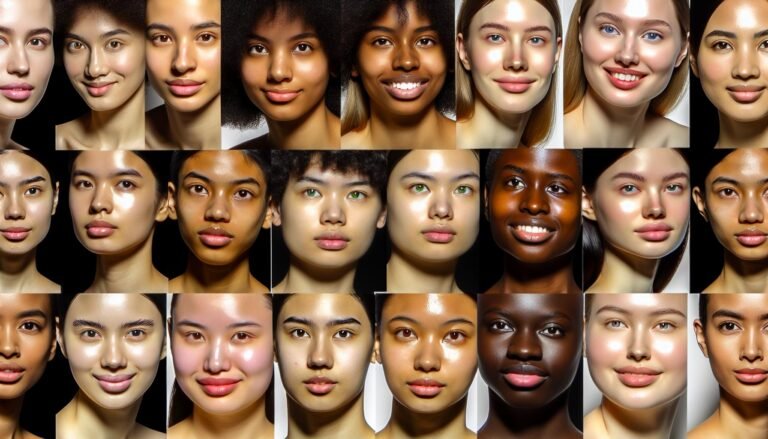Your skin is as unique as you are, and what works for one person might not work for another. Whether your skin is oily, dry, sensitive, or somewhere in between, having a personalized routine ensures that you’re giving it exactly what it needs. A well-balanced approach to skincare doesn’t have to be complicated, but consistency is key. From cleansing to moisturizing, every step plays a crucial role in maintaining a radiant complexion. If you’re unsure where to begin, let’s break it down in a way that’s easy to follow so you can build the ultimate skin care routine tailored to your skin type.
Understanding Your Skin Type
The first step is knowing what category your skin falls into. This foundation helps you make the right product choices and avoid unnecessary irritation.
- Oily skin: Produces excess sebum, leading to shine and potential breakouts. Needs lightweight, oil-balancing products.
- Dry skin: Lacks moisture, making it feel rough or flaky. Requires rich, hydrating ingredients.
- Combination skin: A mix of both oily and dry areas, often oily in the T-zone while dry elsewhere.
- Sensitive skin: Prone to redness, irritation, or allergic reactions. Gentle, fragrance-free formulations work best.
- Normal skin: Balanced without excessive oiliness or dryness. Benefits from a straightforward maintenance routine.
Once you’ve identified your skin type, you can start selecting the right products and steps to build an effective routine.
The Non-Negotiables of a Good Skincare Routine
No matter your skin type, certain skincare steps should never be skipped. These essentials serve as the foundation of every routine.
Cleansing: The First and Most Important Step
A cleanser removes dirt, oil, and makeup, keeping your skin clear and fresh. If you wear sunscreen (which you absolutely should), double cleansing at night—starting with an oil-based cleanser followed by a gentle foaming or hydrating cleanser—can ensure your skin is thoroughly clean.
For oily or acne-prone skin, a salicylic acid or gel-based cleanser can control excess oil. Dry skin types benefit from cream or milk cleansers that provide added hydration.
Exfoliation: A Gentle Reset for Your Skin
Exfoliating clears away dead skin cells, brightening your complexion and helping products absorb better. How often you exfoliate depends on your skin type—oily skin may handle exfoliation 2-3 times a week, while dry or sensitive skin should stick to once a week with gentler formulations.
Chemical exfoliants like AHAs (alpha hydroxy acids) and BHAs (beta hydroxy acids) can be beneficial for refining texture without being too harsh. Avoid physical scrubs if your skin is reactive or prone to redness.
Hydration: More Than Just Moisturizer
Keeping your skin properly hydrated is about more than slathering on a thick moisturizer. Hydrating serums with hyaluronic acid can plump the skin and provide long-lasting moisture.
For oily skin, a lightweight gel moisturizer prevents clogged pores while maintaining hydration. Dry skin needs richer creams with ingredients like ceramides and shea butter to lock in moisture. A good rule of thumb? Apply products to damp skin to maximize absorption.
Sun Protection: Your Best Anti-Aging Step
If you’re skipping sunscreen, you’re undoing all the hard work of your skincare routine. SPF protects against UV damage, premature aging, and hyperpigmentation. Even on cloudy days, sunscreen is a must.
Choose a broad-spectrum SPF 30 or higher, and look for formulas suited to your skin type. Those with oily skin may prefer a matte finish, while dry skin benefits from hydrating sunscreens with added moisture.
Addressing Specific Skin Concerns
Beyond the basic routine, incorporating targeted treatments can help tackle specific concerns.
Acne and Breakouts
If you struggle with acne, ingredients like benzoyl peroxide and salicylic acid can keep breakouts in check. Niacinamide (Vitamin B3) is another great addition, as it soothes inflammation while regulating oil production.
Anti-Aging and Fine Lines
Looking to prevent or reduce signs of aging? Retinoids (Vitamin A derivatives) boost collagen production and smooth wrinkles. Start with a low concentration if you’re new to them, as they can initially cause sensitivity.
Hyperpigmentation and Dark Spots
Vitamin C is your go-to for brightening dark spots and evening out skin tone. Pair it with sunscreen daily to prevent further pigmentation from forming.
Final Thoughts: The Key to a Lasting Routine
Building a skin care routine isn’t about following trends or trying every new product on the market. It’s about understanding what your skin truly needs and sticking to a consistent regimen. The key takeaway? Be patient—your skin won’t change overnight, but with the right steps, you’ll see noticeable improvements over time.
No matter your skin type, consistency and listening to your skin’s needs will always be the most effective approach. And remember, a skin care routine for every skin type shouldn’t be complicated—it should be sustainable, enjoyable, and tailored just for you.



